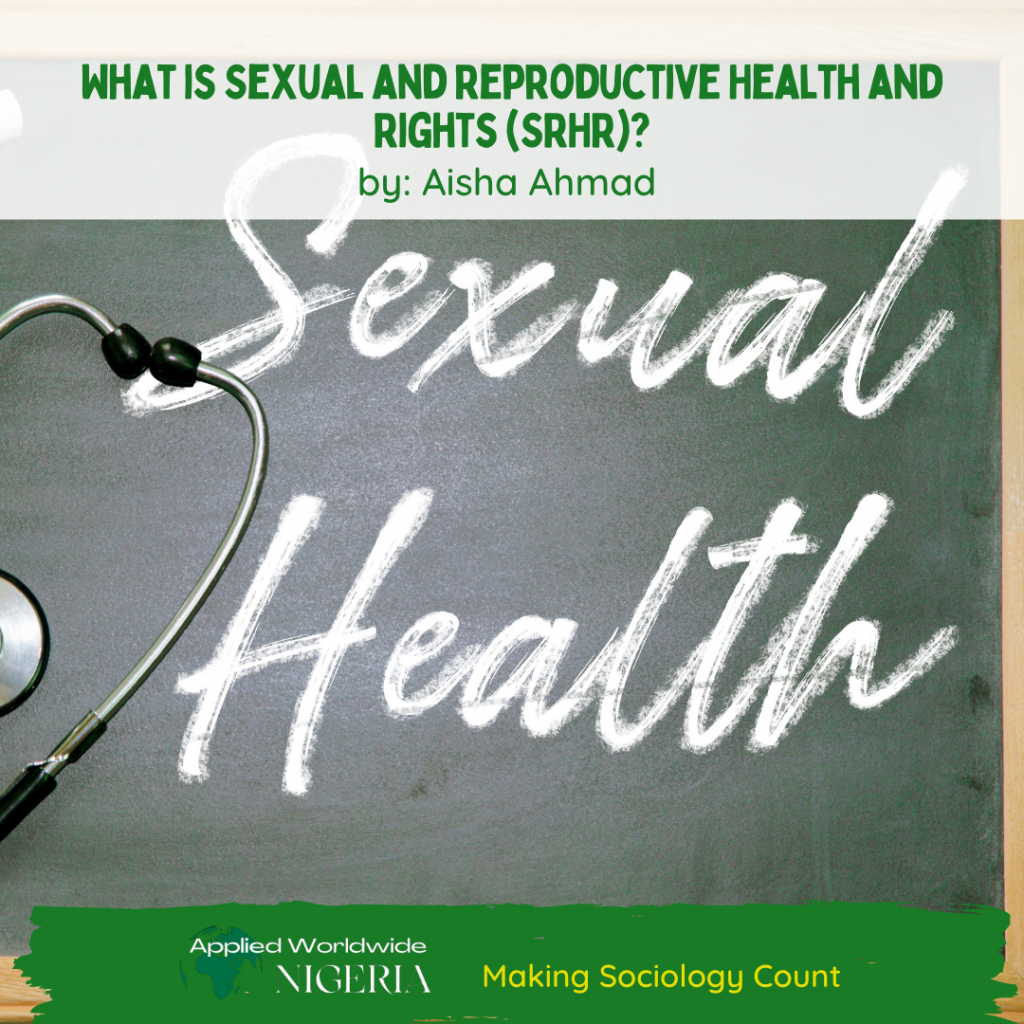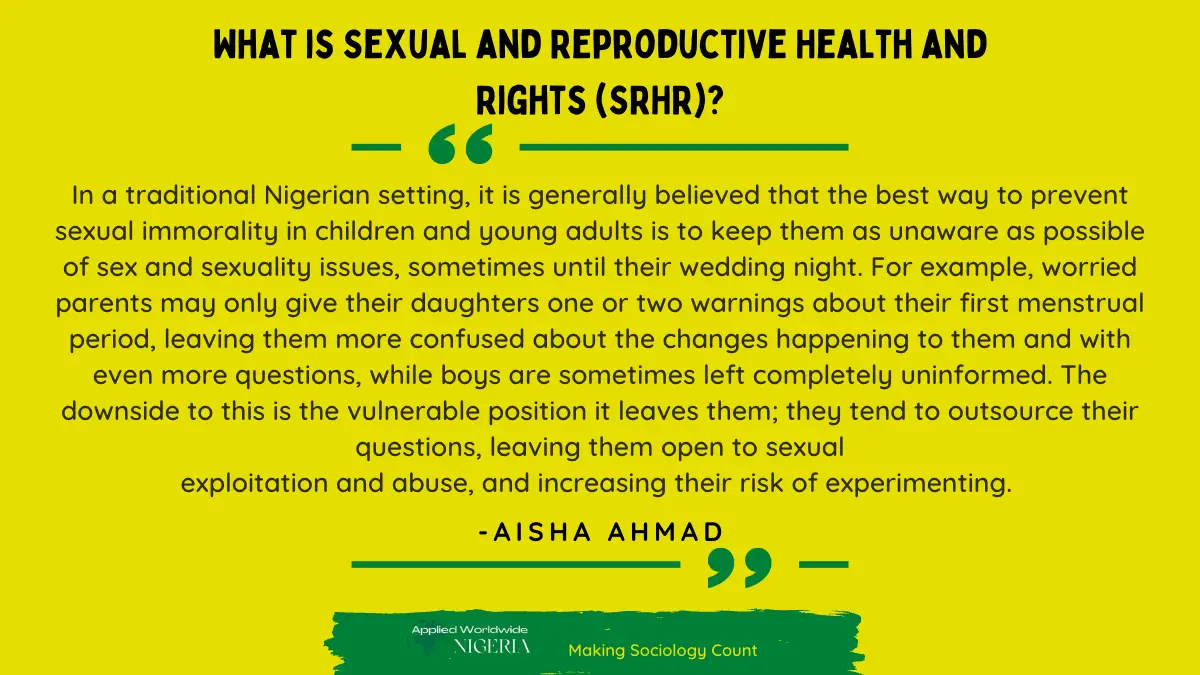What is Sexual and Reproductive Health and Rights?
Sexual and reproductive health and rights (SRHR) is the concept of human rights as they relate to sexuality and reproduction. It combines four aspects that, in some cases, are more or less distinct from one another, but not always, depending on the context. Sexual health, sexual rights, reproductive health, and reproductive rights are these four aspects. They are considered in isolation within the SRHR concept yet are inextricably linked.

Early adolescents, teenagers, and even adults have limited knowledge of SRHR. During early adolescence, rapid physical, social, emotional, and cognitive changes occur. As a result, the best time to build the groundwork for good sexual and reproductive health behaviors is at this early stage. This demographic is called ‘very young adolescents’ (VYA), and they are defined as those between the ages of 10 and 14. They make up roughly half of the 1.2 billion adolescents (ages 10 to 19) in the globe.
Early adolescence is a crucial time for the shift from childhood to older adolescence, establishing the foundation for later gendered attitudes and behaviors and SRHR. Due to the early onset of puberty and sexual maturation, very young adolescents encounter special difficulties. Quite a number of grown-ups lack the knowledge and skill sets to deal with these adolescents’ rapid changes, and social mores that restrict talking about puberty, sexuality, and related subjects may further alienate them from the resources and help they require. Intervention at this crucial life stage, when attitudes and behaviors are developing, offers a special opportunity: If done right, it can have the dual benefits of protecting youth health in the short term and forming healthy habits that
enhance physiological, psychosocial, and economic well-being over the long term.
Parents as Change Agents
As the earliest socialization agents in children’s lives, parents have a unique position when it comes to sexual and reproductive health. Unfortunately, they tend to be more reactive rather than proactive when talking about sexual and reproductive health (SRH); they tend to wait for children to initiate the conversation or approach them with their questions, or ignore the elephant in the room until it is too late. Although they may not always convey precise messages; parents can have a greater impact on their children’s attitudes and ideas about sex. Children in certain Nigerian homes, especially those in rural settings, are reluctant to inquire about sexuality, and those who are bold enough to do so are frequently stigmatized and under constant observation. This occurs even though mainstream, uncensored sexual content is constantly pushed in the mass and print media, entertainment space, and educational institutions. A typical example is the viral video of the young adolescents who went on a school trip, engaged in and filmed a sexual video, right under the nose of school chaperones.
In a traditional Nigerian setting, it is generally believed that the best way to prevent sexual immorality in children and young adults is to keep them as unaware as possible of sex and sexuality issues, sometimes until their wedding night. For example, worried parents may only give their daughters one or two warnings about their first menstrual period, leaving them more confused about the changes happening to them and with even more questions, while boys are sometimes left completely uninformed. The downside to this is the vulnerable position it leaves them; they tend to outsource their questions, leaving them open to sexual
exploitation and abuse, and increasing their risk of experimenting.
Open dialogue between parents and children about SRH has its advantages: adolescents’ sexual health can be improved by raising their understanding of STDs, encouraging them to have more honest conversations with their partners, and even lowering their propensity to engage in sexual risk behavior. People tend to avoid activities they are not ready for when they know the effects or consequences.
Early Sexual Encounter
Research shows that more teens are engaging in sexual activities quite early. According to the 2021 Multiple Indicator Cluster Survey in Nigeria (MICS 2021), UNICEF-sponsored research, 8% of adolescent females (and 3% of adolescent boys) have engaged in sexual activity before the age of 15, with men 10 years or older accounting for 37% of those interactions. Furthermore, adolescent females are more likely to have sex before the age of 15 in rural areas than in urban areas. Compared to 2% of adolescent girls and young women from the wealthiest homes, 16% of adolescent girls from the poorest households have engaged in sexual activity before the age of 15. This indicates that access to quality education plays a role in early sexual encounters. Additionally, the proportion of girls who are sexually active between the ages of 15 and 24 is nearly half (44%) compared to boys in the same age range (24%). Boys from 15 to 19 practice safe sex compared to (57%) of girls in the same age group (49%).
In conclusion, girls need SRH information more due to their faster maturation rate and the fact they get married off early. There was a scene in a popular British drama about the early Regency period where the female lead got married without the right knowledge about SRH, especially about how conception works, and her mother couldn’t be bothered to educate her before her wedding. She had to find out on her own in the worst way possible. This caused a rift and almost ended her marriage. That hit close to home because most married women (husbands not excluded), especially the young and uneducated ones, are not aware of the different contraceptive options available to them. This leads them to have more children than they’re able to take care of.
Global Intervention Methods
A rising number of reproductive health professionals, schools, clinics, and nonprofit groups have created and implemented several programs designed to provide sex education and prevent sexually transmitted infections, including HIV/AIDS. These initiatives often aim to delay the onset of sexual activity, lower the number of sexual encounters and partners, and boost young people’s usage of safe sex methods and reliable contraceptives. However, the lack of access to out-of-school youth and other groups of marginalized young people poses an obstacle to education on sexual and reproductive health. Many young people, especially girls and young women, who frequently drop out of school at a young age due to different social and economic factors, while having the greatest need for education and instruction, are not enrolled in any educational programs.
Therefore, sexual and reproductive health education must start early and continue through adolescence to reinforce messages over time with engaging, age-appropriate visual materials. Improving general access to SRHR information and services will: increase abstinence until they are older, build their boundaries against sexual activities, increase the practice of safe sex methods, keep this vulnerable demographic safe from sexual abuse or violence, reduce the rate of unintended pregnancies and STIs, lower the number of infants and maternal deaths, sexual risk behaviors, STDs, unwanted pregnancies; and increase female empowerment.
Moving Forward
Insufficient progressive SRH at all stages of a child’s development can lead to them creating their own mythology about human sexuality, which when reinforced by external societal pressure (such as pornography, media, sexual periodicals, and books), along with their own natural sexual urges, can result in destructive sexual health issues. It is, therefore, vital that stakeholders (parents, teachers, school nurses, and community health nurses) must all work together to assist adolescents to receive all the knowledge they require, and break the stigma around conversations around SRH.






